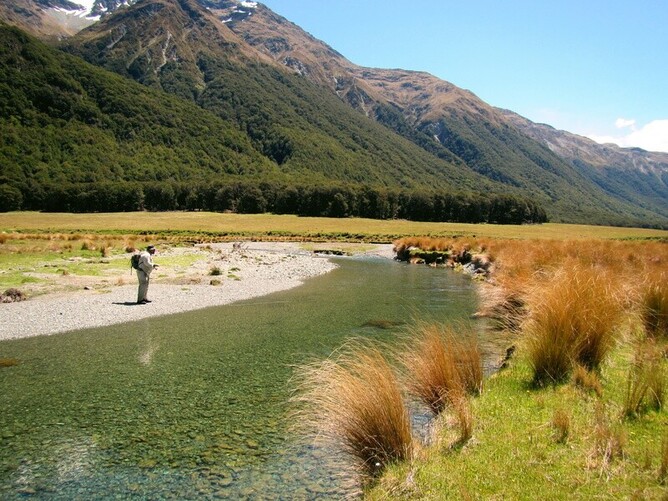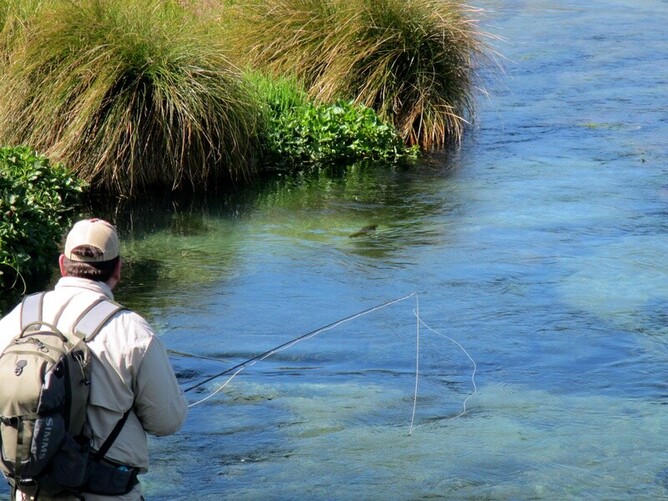One of the biggest things clients fail to come to terms with is the necessity to fish longer leaders on our clear rivers here in NZ. Now I'm not talking the 18' + rigs we sometimes employ ourselves, but even the standard 12'- 15' leader / tippet combos we fish here daily far surpass what many visitors are used to. In fact, many locals may employ such leader systems, however not handle them too well either.
Long leaders on short lines are often difficult to control but have no fear, Chris is here... Follow me!
The secret to casting longer leaders on often 30' to 40' casts? Good, basic casting mechanics to maximise energy transfer. Shh... Don't tell anyone!
Casting Arc
One of the most important casting tools is to understand and employ a variable casting arc. This simply allows the rod to work properly, maintains a straight line path of the rod tip which creates an efficient, aerodynamic shaped loop and allows the taper of your flyline to do its job. The casting arc is the change of angle at your rod butt throughout your casting stroke (the 'casting V' as many clients better understand) and should be matched to the flex in your rod.
Simply remember:
Short line = minimal power = minimal flex = small casting arc.
Longer line = minimal power = deeper flex = wider casting arc
Because we don't want to use any more power than we need to...
Delayed Rotation
We also want to delay the rotation, or turnover of the rod throughout our stroke. This allows for a longer acceleration phase, more slack line to be removed from the cast, and a deeper, more controlled load / flex of the rod. "Get the end of your line moving before you send it on its way", much like throwing a javelin or a long throw with a cricket ball in from the boundary. Accelerate the hand before you make the cast.
Think \\/ -> on the forward cast and <- ////
on the back cast. / just doesn't do a lot.
Smoothly accelerate the line from the water into the back cast by lifting the rod tip at a constant angle and rotate as the line lifts off. Pause the back cast, then smoothly accelerate the rod butt forward before rotating right at the end of your stroke. Now follow through... You're welcome.
Now Stop
Finally, you must stop the rod crisply and completely to anchor the rod butt at the completion of your stroke on both the forward and backcast, and allow the rod to unload to its full potential. Think 'accelerate your hand into a wall', pulling through your cast with a relaxed hand, rotating and squeezing to tense the muscles of your arm and stop your stroke like an opponent running into Mike Tysons fist. Relaxing your hand immediately following the stop will allow your rod tip to oscillate, and smooth out your cast.
Remember, the majority of failings in the forward cast I see are born from an ineffective back cast. Put extra attention into accelerating, delaying rotation and stopping your back cast crisply in an upward direction and often your forward cast will magically improve!
Now we can also mention tracking, back cast trajectory, adjustments for the wind etc however above are the three most important aspects of any cast. Play with them, practise them and ingrain them to muscle memory and not only your ability to handle longer leaders, but your casting ability overall will improve in bounds.
Leaders
Use a well constructed leader with a heavier / higher mass butt section to better transfer energy such as the Trout Hunter or new, Airflo Tactical range and add tippet to suit. Combined with the above you will be turning over 15' + leaders whenever the situation calls.
Get to it!


